This article was co-authored by Luba Lee, FNP-BC, MS. Luba Lee, FNP-BC is a Board-Certified Family Nurse Practitioner (FNP) and educator in Tennessee with over a decade of clinical experience. Luba has certifications in Pediatric Advanced Life Support (PALS), Emergency Medicine, Advanced Cardiac Life Support (ACLS), Team Building, and Critical Care Nursing. She received her Master of Science in Nursing (MSN) from the University of Tennessee in 2006.
There are 10 references cited in this article, which can be found at the bottom of the page.
wikiHow marks an article as reader-approved once it receives enough positive feedback. In this case, 89% of readers who voted found the article helpful, earning it our reader-approved status.
This article has been viewed 186,728 times.
MRSA (methicillin-resistant Staphylococcus aureus) is a type of staph infection that can spread through skin-to-skin contact, contaminated surfaces, or water droplets. While it’s usually caught in a hospital or clinical settings, it’s also really common in areas where you have close physical contact with people, such as locker rooms or at home with your family.[1] It usually lives on the skin without causing difficulties, but in some cases, it may develop into a serious infection. When MRSA is thought to be the cause of an infection, testing is necessary to confirm a diagnosis and start early intervention. Read on to learn more about how to test for MRSA.
Steps
Knowing When to Get Tested
-
1Know when to suspect an MRSA infection.[2] If you have a cut that isn't healing properly, MRSA may be the cause. Infections caused by MRSA don't necessarily look different from other types of infections. Here are the hallmarks of an MRSA infection:[3]
- A red, raised sore that looks like a spider bite
- A swollen and pus-filled cut
- A fluid-filled blister with a honey-colored crust
- An area of red, firm skin that is warm or hot to the touch
-
2Get tested if you've had contact with someone has MRSA. Since MRSA is spread by skin contact, it's wise to get tested if you have been in contact with someone you know to have MRSA. You should also get tested if you live in an area that has a high prevalence of MRSA since it increases your chances of contracting it.[4]Advertisement
-
3Get tested if your immune system is compromised. This will include elderly individuals, those who are infected with HIV, or someone with cancer.[5]
- You should also get tested if you’ve recently been hospitalized or have used antibiotics.
Getting Tested
-
1Have a culture done. A healthcare professional will swab the wound and take a culture test.[6] This is taken to a lab for further investigation. The laboratory will place the culture test into a solution and examine it for MRSA. If the sample contains Gram-positive cocci clusters, MRSA is likely the culprit.
- The sample is also tested for Staphylococcus aureus.[7] This is performed with a latex agglutination test. The sample is placed in a tube that holds rabbit plasma and free coagulase. If staph is present, a clump will form and further testing will be done to determine whether or not the bacterium is resistant to antibiotics.
- If MRSA is present, the specimen will continue to grow at the same rate despite the medicine. This process only takes one or two days.
-
2Get the nasal passage tested. Another MRSA test involves swabbing the nostrils. A sterile swab is used to collect a sample that is placed in incubation and observed for the presence of MRSA. The lab process is similar to what is conducted with the swab from a wound. Within 48 hours, there will be an answer to the test.[8]
-
3Have a blood test. The FDA has recently developed a new blood test for MRSA.[9] Clinical tests were done and showed positive results. These tests managed to identify all positive specimens of the MRSA bacteria. They give faster results than with tests that involve swabbing. They are meant to be used on people who are likely to have a staph infection, but must be backed up with other tests.
Dealing With MRSA
-
1Apply warm compresses to help promote drainage. If you have any abscesses, furuncles, or carbuncles from MRSA, then get a warm compress and hold it gently against the area. If the infection is less than 2 inches (5.1 cm) in circumference, compresses may be enough to treat it.
-
2Have the infection drained by a medical provider. If home treatment doesn’t work, ask your doctor if they can do incision and drainage. Your doctor will make a small cut and let the liquid drain out from inside. If your infection is in a sensitive area, like your face or gential region, then your doctor may refer you to a specialist.
- You may not need antibiotics after getting an abscess drained.
-
3Take antibiotics you are prescribed. In addition to incision and drainage, your doctor may prescribe antibiotics to help fight your infection. Take the full course, even if your symptoms improve quickly. If your symptoms don't go away, call your doctor.
-
4Avoid spreading it to others. If you have MRSA, you should avoid touching other people. Wash your hands often, especially before you eat or prepare food, before and after using the bathroom, and before and after changing your dressings. This will help prevent other people from getting MRSA.[10]
- You may want to clean surfaces you routinely touch, like keyboards and electronics.[11]
- MRSA can be spread through sneezing and coughing.
Expert Q&A
-
QuestionWhy is a gram stain not helpful in identifying MRSA from a wound swab?
 Mandolin S. Ziadie, MDDr. Ziadie is a board certified Pathologist in South Florida. She specializes in renal, transplant, and pediatric Pathology and has over 12 years of experience. She earned her medical degree from the University of Miami School of Medicine in 2004 and completed her fellowship in Pediatric Pathology at Children’s Medical Center in 2010.
Mandolin S. Ziadie, MDDr. Ziadie is a board certified Pathologist in South Florida. She specializes in renal, transplant, and pediatric Pathology and has over 12 years of experience. She earned her medical degree from the University of Miami School of Medicine in 2004 and completed her fellowship in Pediatric Pathology at Children’s Medical Center in 2010.
Board Certified Pathologist A gram stain only identifies the general nature of a bacteria. It does not tell whether or not a bacteria has acquired resistance to an antibiotic.
A gram stain only identifies the general nature of a bacteria. It does not tell whether or not a bacteria has acquired resistance to an antibiotic. -
QuestionCan MRSA be mistaken for a viral infection, eczema, or the flu?
 Mandolin S. Ziadie, MDDr. Ziadie is a board certified Pathologist in South Florida. She specializes in renal, transplant, and pediatric Pathology and has over 12 years of experience. She earned her medical degree from the University of Miami School of Medicine in 2004 and completed her fellowship in Pediatric Pathology at Children’s Medical Center in 2010.
Mandolin S. Ziadie, MDDr. Ziadie is a board certified Pathologist in South Florida. She specializes in renal, transplant, and pediatric Pathology and has over 12 years of experience. She earned her medical degree from the University of Miami School of Medicine in 2004 and completed her fellowship in Pediatric Pathology at Children’s Medical Center in 2010.
Board Certified Pathologist Yes. If proper testing (cultures from the wound or blood) is not done and only the symptoms are evaluated, then MRSA can be mistaken for many things.
Yes. If proper testing (cultures from the wound or blood) is not done and only the symptoms are evaluated, then MRSA can be mistaken for many things. -
QuestionWhich area is used for the red swab?
 Mandolin S. Ziadie, MDDr. Ziadie is a board certified Pathologist in South Florida. She specializes in renal, transplant, and pediatric Pathology and has over 12 years of experience. She earned her medical degree from the University of Miami School of Medicine in 2004 and completed her fellowship in Pediatric Pathology at Children’s Medical Center in 2010.
Mandolin S. Ziadie, MDDr. Ziadie is a board certified Pathologist in South Florida. She specializes in renal, transplant, and pediatric Pathology and has over 12 years of experience. She earned her medical degree from the University of Miami School of Medicine in 2004 and completed her fellowship in Pediatric Pathology at Children’s Medical Center in 2010.
Board Certified Pathologist You will need to use the swab either on a suspected wound or on the inside of the nose.
You will need to use the swab either on a suspected wound or on the inside of the nose.
Warnings
- MRSA can be an extremely dangerous condition. It is vital to speak with a doctor when it is suspected so that tests can be taken.⧼thumbs_response⧽
- More than one test may be necessary to make a conclusive MRSA diagnosis.⧼thumbs_response⧽
- Sometimes a person will be considered a carrier for this condition. This means that this person is not affected by MRSA, but can spread it to others.⧼thumbs_response⧽
- MRSA may be brushed off as a regular staph infection, but it is essential to insist on an MRSA test.⧼thumbs_response⧽
References
- ↑ https://www.webmd.com/skin-problems-and-treatments/understanding-mrsa
- ↑ https://www.mayoclinic.org/diseases-conditions/mrsa/symptoms-causes/syc-20375336
- ↑ http://www.ucsfhealth.org/education/mrsa_testing/
- ↑ https://www.cdc.gov/mrsa/community/index.html
- ↑ https://www.mayoclinic.org/diseases-conditions/mrsa/symptoms-causes/syc-20375336
- ↑ https://www.urmc.rochester.edu/encyclopedia/content.aspx?contenttypeid=167&contentid=mrsa_culture
- ↑ https://www.cdc.gov/hai/organisms/staph.html
- ↑ https://www.ucsfhealth.org/education/mrsa_testing/
- ↑ https://www.webmd.com/a-to-z-guides/news/20080102/fda-oks-1st-quick-mrsa-blood-test
About This Article
You should test for MRSA if you have a wound that won’t heal, if you’ve come into contact with someone who has MRSA, or if you have a weakened immune system. This will most likely involve swabbing your wound and sending the sample off to a laboratory. Alternatively, you might be asked for a nasal passage test, in which a healthcare professional swabs inside your nostrils. They may also want to take a blood sample, which can yield faster results than swabs. For more tips from our Medical co-author, including how to deal with MRSA, read on!
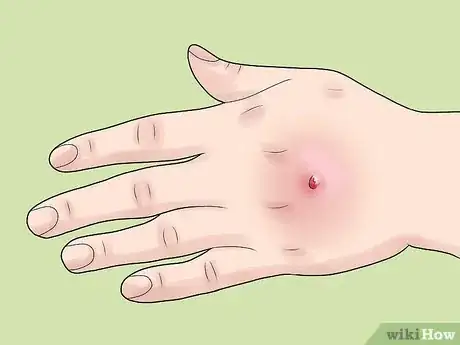
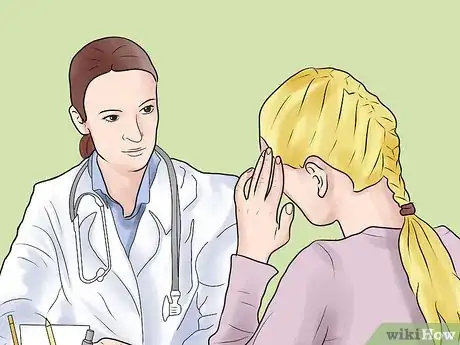
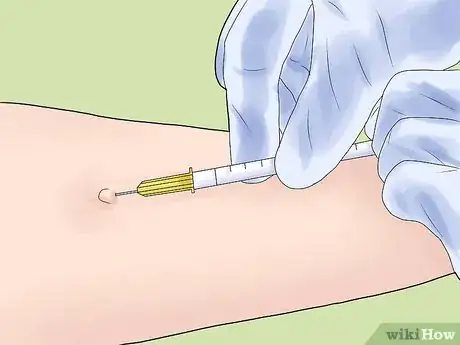
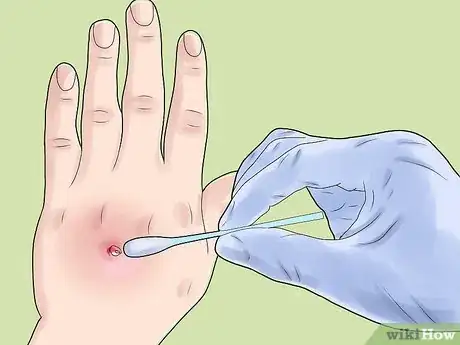
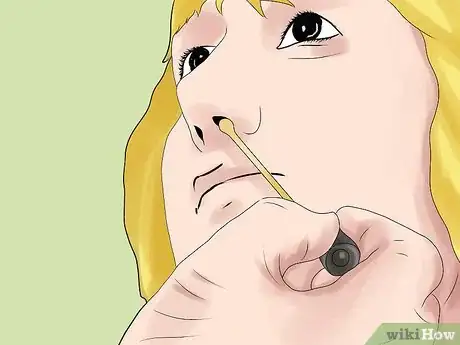
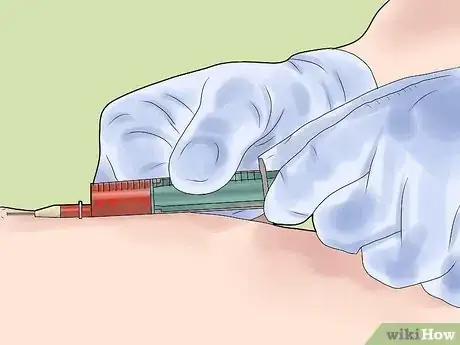

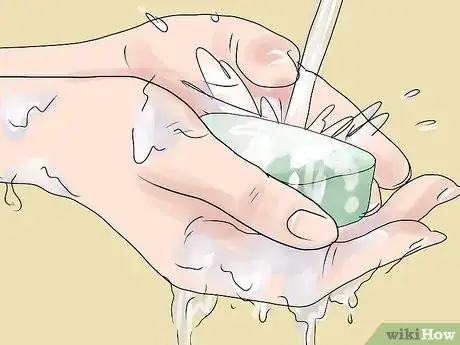
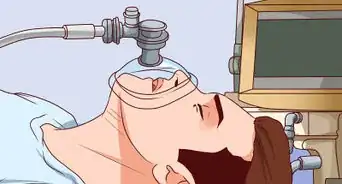


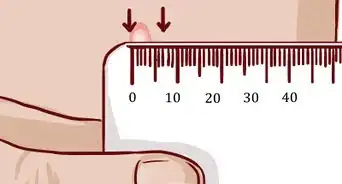


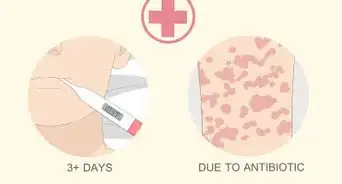





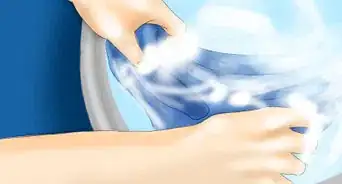
-Step-11.webp)











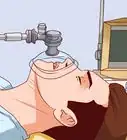


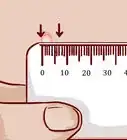



































Medical Disclaimer
The content of this article is not intended to be a substitute for professional medical advice, examination, diagnosis, or treatment. You should always contact your doctor or other qualified healthcare professional before starting, changing, or stopping any kind of health treatment.
Read More...